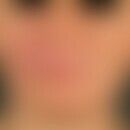HistoryThis section has been translated automatically.
RAPADILINO syndrome was first described in 1989 by a Finnish research group led by Helena Kääriänen. Further scientific articles on this topic were published primarily by researchers from the Universities of Helsinki and Turku.
DefinitionThis section has been translated automatically.
RAPADILINO syndrome (RAPADILINO is an acronym for: RA - malformations of radial rays, PA - patella and palate anomalies, DI - diarrhea, LI- limb anomalies and short stature and NO - slender nose and normal intelligence) is a very rare polyorganic genetic disorder that has been documented mainly in Finnish populations.
You might also be interested in
EtiopathogenesisThis section has been translated automatically.
RAPADILINO syndrome is caused by mutations in the RECQL4 gene. This gene codes for the ATP-dependent DNA helicase Q4. So far, 4 different mutations have been reported. Three nonsense mutations have been described (in exons 5, 18, and 19), i.e. mutations that produce an incorrect stop codon and thus lead to shortening as well as loss of function of the resulting protein. Far more common, however, is an in frame deletion, which results in exon 7 being erroneously completely removed from the protein during splicing and therefore 44 of 1208 amino acids are missing.
ClinicThis section has been translated automatically.
Bones of the forearms and thumbs are dysplastic or missing completely, as well as the patellae. Furthermore: cleft palate, high arched palate, long narrow nose and dislocated joints malformed joints. Many children with RAPADILINO syndrome have difficulty feeding and suffer from diarrhea and vomiting. The symptomatology leads to slow growth and short stature in affected individuals.
Dermatologically: unlike Rothmund-Thomson syndrome and Baller-Gerold syndrome, no signs of poikiloderma. Evidence of café-au-lait spots.
In addition, people with RAPADILINO syndrome have a slightly increased osteosarcoma and lymphoma risk. In people with RAPADILINO syndrome, osteosarcoma most commonly develops in childhood or adolescence, and lymphoma typically occurs in young adulthood
DiagnosisThis section has been translated automatically.
The diagnosis of RAPADILINO syndrome is made primarily on the basis of the characteristic symptoms, since DNA analysis aimed at detecting the mutation is expensive, time-consuming and sometimes inaccurate. Due to the inheritance of the disease, human genetic counseling may be useful.
Differential diagnosisThis section has been translated automatically.
The syndrome must be distinguished from Rothmund-Thomson syndrome and Baller-Gerold syndrome. Both also have mutations in the RECQL4 gene. These syndromes are also characterized by radial ray defects, skeletal abnormalities and slow growth. In Rothmund-Thomson syndrome, poikiloderma secures the diagnosis. In Baller-Gerold syndrome, there are malformations of the bony skull. The risk of cancer is higher in these two disorders than in RAPADILINO syndrome.
LiteratureThis section has been translated automatically.
- Baller F (1950) Radius aplasia and inbreeding. Z. Menschl. Vererb. Konstitutionsl 29: 782-790.
- Cohen MM et al (1996) Is there a Baller-Gerold syndrome? (Editorial) Am. J Med Genet. 61: 63-64.
- Gerold M (1959) Fracture healing in a rare case of congenital anomaly of the upper limbs. (Healing of a fracture in an unusual case of congenital anomaly of the upper extremities). Zbl. Chir. 84: 831-834.
- Kääriäinen H et al. (1989) RAPADILINO syndrome with radial and patellar aplasia/hypoplasia as main manifestations. In: American journal of medical genetics 33: 346-351.
- Lu H et al (2011) Human RecQ helicases in DNA double-strand break repair. Front Cell Dev Biol9:640755.
- Siitonen HA et al (2003) Molecular defect of RAPADILINO syndrome expands the phenotype spectrum of RECQL diseases. In: Human Molecular Genetics 21: 2837-2844.
Outgoing links (5)
Baller-Gerold syndrome; Café-au-lait stain; Poikiloderma (overview); RECQL4 Gene; Rothmund-thomson syndrome;Disclaimer
Please ask your physician for a reliable diagnosis. This website is only meant as a reference.




